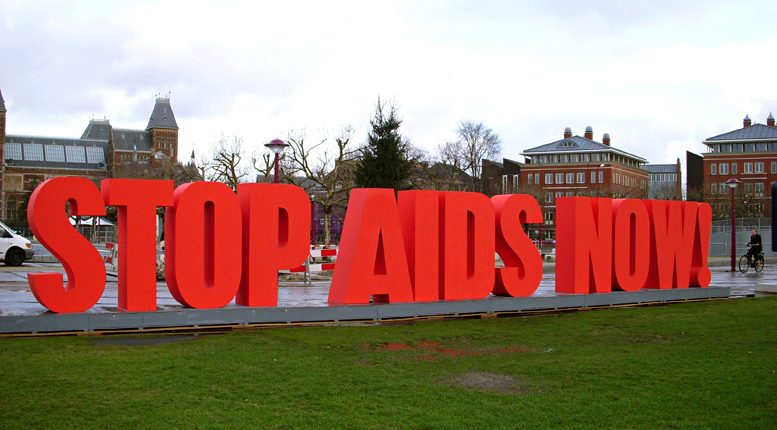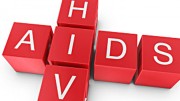HIV is still out of control and growing in some areas
By: Sean Cahill, Ph.D. and Kenneth Mayer, M.D. —
As 18,000 delegates gather at the 21st International AIDS Conference in Durban, South Africa this week, there are promising signs that we have turned the corner with the generalized epidemic: millions more people are on anti-retroviral treatment, new infections are down, and deaths from AIDS have decreased. But within concentrated epidemics among gay and bisexual men and transgender women around the world, HIV continues to rage out of control, thanks to paltry funding and continued structural barriers such as criminalization, discrimination, and violence. As a result, among men who have sex with men (MSM) and transgender women, HIV epidemics may actually be getting worse.
Worldwide, 17 million people are on anti-retroviral treatment, representing about half of all people infected with the virus and most of the millions who are aware that they are infected. Close to 90 percent of diagnosed HIV-infected individuals in sub-Saharan Africa are on antiretroviral treatment, and 76 percent are virally suppressed. (Unfortunately, in the US, treatment and viral suppression rates are much lower.) Thanks to improved treatment and prevention approaches, annual new HIV infections are down by six percent worldwide since 2010. New infections among children were cut in half since 2010, thanks to scaled up treatment with pregnant women. AIDS-related deaths and tuberculosis-related deaths among people living with HIV have been cut dramatically over the past decade. Much of this progress is due to the generosity of the US global AIDS response, initiated by President George W. Bush and the US Congress in 2003, as well as excellent work by the Clinton and Gates Foundations and other global funders.
Despite this progress, much remains to be done to address structural drivers of vulnerability to HIV in the general population, such as gender inequality, a lack of comprehensive sexual health education, and the criminalization of sex work and injection drug addiction.
But even as things have improved for the heterosexual majority in Africa and other parts of the world disproportionately burdened by HIV, for MSM and transgender women the picture appears bleak. HIV prevalence among MSM in sub-Saharan Africa is 18 percent, nearly four times the rate for the general population. In the Caribbean HIV prevalence among MSM is 25 percent, and in the Americas and much of Asia, prevalence is 15 percent. An estimated 19 percent of transgender women around the world are living with HIV. MSM and transgender women are the populations most burdened by HIV, on a per capita basis. In addition to uncontrolled HIV epidemics among these populations, there are reemerging STI epidemics as well, such as syphilis.
According to a 2014 survey by the Global Forum on MSM and HIV, most MSM around the world (78 percent) do not have access to HIV prevention education, and 72 percent do not have access to safe lubricants, instead using cooking oil or petroleum jelly, which can cause condoms to break. In Africa only about 10 percent of MSM reported access to prevention education and lubricants, while only 40 percent said they could access HIV testing and treatment if necessary. In Africa, anti-gay prejudice and criminalization of homosexuality prevent many MSM from accessing anti-retroviral treatment for HIV. In 2016, 78 countries criminalize homosexuality, including 38 in sub-Saharan Africa. In Nigeria being gay or even just organizing in support of gay rights can get you 14 years in prison.
“How do I provide HIV prevention and testing in that environment?” asked Bisi Alimi, speaking at a Global Forum on MSM and HIV event in Boston July 16. These anti-gay governments also block the meaningful inclusion of MSM and transgender women in global HIV planning fora, such as the United Nations meeting last month that issued a political declaration taking no action on the disproportionate epidemics among MSM and transgender women.
Confounding state and cultural oppression is a lack of funding. According to George Ayala, Executive Director of the Global Forum on MSM and HIV, of $4 billion a year spent by the Global Fund to Fight AIDS, Tuberculosis and Malaria, only $82 million is targeted toward MSM and transgender women. Jose Antonio Izazola of UNAIDS estimates that the global funding need for HIV prevention efforts with MSM is $400 million, five times actual funding. While the US government has been very supportive of HIV prevention with MSM and transgender women in the global epidemic in recent years, including increasing funding, often partner countries divert funding earmarked for MSM and transgender women, and channel it to established HIV groups that lack cultural competency to serve these marginalized populations. Pre-exposure prophylaxis (PrEP)—the use of antiretroviral medications for the prevention of HIV infection—has great potential to transform HIV prevention with many populations, including MSM and transgender women. Yet in the few countries in which PrEP is being rolled out in the global south, it is often being done with populations other than MSM and transgender women.
In recent years, and this week in South Africa, we hear speaker after speaker state that we have the tools to bring about “the end of AIDS.” It’s hard for many gay and bisexual men and transgender women to understand how leaders can say this with a straight face, pun intended. Until governments end the criminalization of MSM and transgender people, and protect their basic human rights—including the right to preventive health care—we will fail to end the HIV epidemic. And until the major HIV funders prioritize MSM and transgender women in the HIV response, we will continue to see HIV ravage these communities around the world.
* Sean Cahill, Ph.D. is Director of Health Policy Research at the Fenway Institute.Kenneth Mayer, M.D. is Co-Chair and Medical Research Director at the Fenway Institute, Director of HIV Prevention Research at Beth Israel Deaconess Medical Center, and Professor of Medicine at Harvard Medical School.







